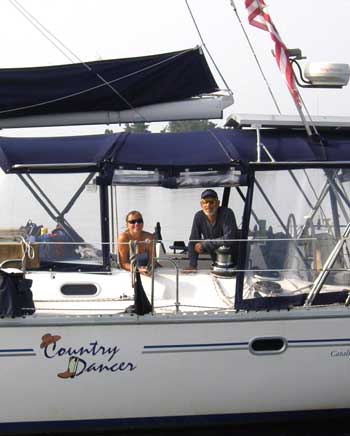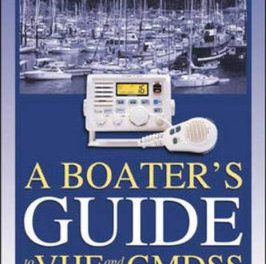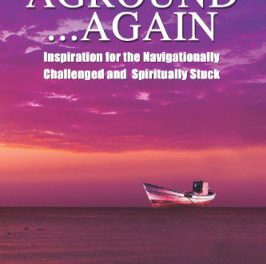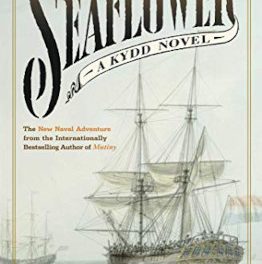 One night, about two years ago, we sailed Country Dancer, our Catalina 470, into a very narrow fjord just southeast of Thunder Bay, Canada. This little inlet was about 100-odd feet across, 25 feet deep, and had sides of near-vertical granite. As we had done before, we motored as far back into the granite gash as we felt we could and dropped our 73-pound Rocna anchor. It set immediately and we backed out of the cut a couple hundred feet to drop our 55-pound Rocna stern anchor. With two points established, we took the dinghy to the starboard shore and found a hearty looking little tree growing out of a nice crack and tied one of our long lines to the trunk. Three solid sets in a spot in which we could not turn our 47 feet around in seemed pretty secure. With 6-plus feet of draft in the cold fresh water, I had little fear of touching anything for the night. We pulled out our current reads, crime novels, to settle in with until nightfall.
One night, about two years ago, we sailed Country Dancer, our Catalina 470, into a very narrow fjord just southeast of Thunder Bay, Canada. This little inlet was about 100-odd feet across, 25 feet deep, and had sides of near-vertical granite. As we had done before, we motored as far back into the granite gash as we felt we could and dropped our 73-pound Rocna anchor. It set immediately and we backed out of the cut a couple hundred feet to drop our 55-pound Rocna stern anchor. With two points established, we took the dinghy to the starboard shore and found a hearty looking little tree growing out of a nice crack and tied one of our long lines to the trunk. Three solid sets in a spot in which we could not turn our 47 feet around in seemed pretty secure. With 6-plus feet of draft in the cold fresh water, I had little fear of touching anything for the night. We pulled out our current reads, crime novels, to settle in with until nightfall.
And what a nightfall it was.
About midnight our “spider sense” went off as a Northland squall worked its way into the fjord. When the wind starts to pipe up, we know it’s time to close things up, so Jodi and I made our naked ways topsides to close the panels of our cockpit enclosure. Invariably we hear the wind after it has already gotten strong enough to turn the simple act of zipping panels a major battle, and this night was still worse because there was no moon. By feel alone we slowly managed to secure the hatches, lights, and bimini as the rain and lightning began.
Being from Florida, we know what a squall can look like, and this one came on us like it had taken lessons in the Keys. With the instruments turned on, I watched the wind speed climb as the squall screamed up the fjord behind us: 15, 25, 35, 44 knots. This little guy had learned from the best and had us rocking and bouncing off each of our three anchor points. Then came the rain, so hard and so fast I could not see the bow pulpit from the cockpit. On a night as dark as pitch, the little pool of light around our instruments seemed blinding, and the world beyond it completely vanished.
Violent yanking from left, then forward, then back, and then left again had us reeling and the depth alarm began to scream. We’d anchored in 25 feet, but the sounder was unrolling past the 12-foot alarm depth. I started the diesel. But I had no point of reference, I couldn’t see the shore or the sky, and the sounder continued to wind down to 9 feet then 8 feet. I waited for us to slam against the granite wall, a wall I couldn’t see. Then 7 feet and then 6 feet. I reached for the shifter, assuming it would be reverse that I needed, but the depth sounder went no lower. The wind paused and the soundings increased—we had made it.
My heart took longer than the storm to slow its hammering, but an hour after it was over, we found zero damage and all three lines looked to be snug and intact. But when we later untied and departed, I know we left behind some blue bottom paint somewhere in on the rocks of that fjord.
Turn the clock forward two years and we were at anchor in Venice Florida. This time in Lemon Bay, in 10.5 feet of water. Our big wing keel is shaped like an anchor, and when it grounds in the Florida sand, it sticks like an anchor too, but when there is only 10.5 feet, you do what you have to do. During the course of the day and evening we had turned a full 360 degrees around the big Rocna and the depth was pretty constant all the way around.
Just after dark, the squall hit. Again we woke and started closing up the boat. Again the wind speed climbed and the raindrops enlarged to the size of coffee cups. Again we struggled to zip zippers that had way too much pressure on them.
This time the wind increased to just over 50 knots and waves built that rocked us from rail to rail. My big concern was that one of these building swells would drag the water out from under us and our rudder wound then pound itself to death in the hard sand bottom. As the storm peaked, I watched its radar image on the iPad and decided to start the engine. This time I knew we had a lot of room to maneuver and the depth was 10 feet all around the anchor. My aim was to make sure we didn’t drag into a nearby bridge.
Then the depth sounder alarm sounded again, 9 feet. It could have been one of the waves, but when I looked the sounder was already at 8 feet. Then at 7. Then at 6.2. I yelled for Jodi to hang on and looked at the chart plotter for guidance. 5.8 feet displayed. Then 4.8. What…? Then the sounder showed 2 flat bars, almost the same shape my EKG would have had at this point.
The rain continued as though we were in the Tropics and again I could see no further forward than the mast. The plotter said we hadn’t moved, but I assumed the rain had killed the satellite reception and that we had moved, into very shallow water. I considered that we were aground in the sand, our keel dug in, and that I hadn’t felt the touch.
As the rain slowed, the sounder came back to life, and the numbers again rose slowly to the 10.5 feet we had before the squall hit. As the sky cleared, the plotter continued to affirm that our good ol’ Rocna hadn’t budged. What the heck?
A month has passed and my theory is that the intense rain that fell, both in the deep fjord and in the shallow Florida bay, caused enough noise interference in the water that the sounder lost its ability to see the bottom and began reporting the rain’s effect as echo returns, thus displaying erroneous (and impossible) depths. That means that we probably didn’t leave paint on the granite wall in Canada and that we never touched bottom in Lemon bay.
But a theory is just a theory and I would sure appreciate some input from readers who have other thoughts. If I can determine exactly what happened I will be a lot more comfortable the next time a big squall catches Country Dancer at anchor.
Gary and Jodi Bratton with their schipperke Rio have been full-time cruising on their Catalina 470, Country Dancer, since April 2013. Gary attended the University of Washington and had multiple careers including Professional Motocross Racer, Home Builder, several positions in the Sailing Industry, and finally 20 years in his own IT Consultancy. Now semi-retired, he writes web site code for a book of international clients (including Good Old Boat) and occasionally stories about projects and adventures.





